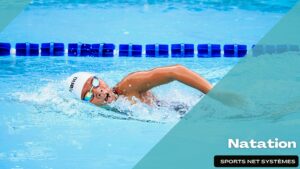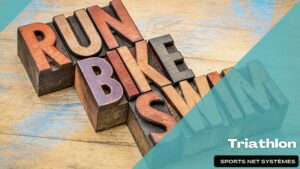Improvements in breaststroke across the board, over the past twenty years, are largely due to rule changes that allow better use of leverage and the elimination of drag. By producing an integrated rocking motion between the head and legs, with the hips as stable as possible in the middle, the productivity of the arm stroke, kick and glide is increased, and points of potential drag are minimized. A good rocking motion does not have to be extreme to be effective, it just has to be a unified body action, so each stroke action works as a counterbalance to the others. Using a rocking motion allows the swimmer to inhale when more water covers the feet. Using a rocking motion allows the swimmer to transition to recovery more quickly, avoiding drag. The purpose of the following drills for leverage in the breaststroke is to learn to use a rocking motion to create better leverage and less drag in the stroke.
Breaststroke with Dolphin
THE PURPOSE OF THIS DRILL
- Developing a productive rocking motion
- Maintaining a firm core
- Developing a rhythmic stroke
HOW TO DO THIS DRILL
- Step 1 : – Push off the wall preparing to swim breaststroke, arms extended, looking at the bottom of the pool. Maintaining a firm core, do six good full-body dolphin kicks. Avoid over-bending at the knee, and allow each kick to whip down from high in your body down to your feet. As you move through the water, notice how the dolphin action positions your body similar to the rocking motion of the breaststroke.
- Step 2 : – After six kicks, add the breaststroke arm stroke. Sweep out toward the corners as you snap your feet downward. The combined actions of your quick insweep and the downbeat of the dolphin should enable you to feel lift at this point, so you are able to achieve your inhale.
- Step 3 : – Without any pause in your arm stroke, finish your insweep and kick again as you shoot through the recovery. The combined action of a quick, narrow recovery, and the downbeat of the dolphin, should enable you to regain your downhill position.
- Step 4 : – Do another stroke. Kick down as your hands approach their widest point, and down again as your hands go into the fast recovery.
- Step 5 : – Do several strokes in a row. Use a rhythmic dolphin, and produce two evenly spaced down-beats to each arm stroke. One kick should give you lift to achieve breathing. The other should add to the speed of your recovery, so you achieve a productive glide.
- Step 4 : – Practice more until you can feel a rhythmic rocking motion that assists the other actions of the stroke.

DRILL FEEDBACK CHART
| Problem | Modification |
| I am not rocking. | Make sure your dolphin action goes through the entire length of your body, not just through your lower legs. Allow your chest to be low through the recovery, and high during breathing. |
| I lose the rhythm after a few strokes. | It does take practice. Focus on the timing the down-beat of your two kicks to the two key points in the arm stroke: the widest point and the narrowest point. When you lose the rhythm, stand up and start again. |
| I get stuck in the praying position. | This could mean that your kicks are both happening before that point. One kick should occur as you turn the corners, so you have speed going through the praying position. The next kick helps you regain a downhill float. |
Med Hassan EL HAOUAT
![]()
Breaststroke Alternating Dolphin and Breaststroke Kick
THE PURPOSE OF THIS DRILL
- Using dolphin action in the breaststroke
- Transferring power through the rocking action of the stroke
- Practicing a productive rocking action
HOW TO DO THIS DRILL
- Step 1 : – Push off the wall, preparing to swim breaststroke. Achieve a straight spine and streamlined position. Begin the breaststroke arm stroke, sweeping out to the corners. Inhale with the insweep. Do one good full-body dolphin at the corners, and another one as you shoot your hands forward into a narrow, streamlined recovery. Glide.
- Step 2 : – Begin the next arm stroke. Sweep your hands out, round the corners and inhale as you do the insweep. This time, do one good breaststroke kick as you shoot your hands forward into a narrow, streamlined recovery. Glide.
- Step 3 : – Continue swimming breaststroke alternating dolphin and breaststroke kick. Accelerate your arm stroke so the insweep merges seamlessly into the recovery. Your hands should arrive in the streamlined position before the kick finishes. Notice that by doing so you achieve a good downhill streamline, and productive glide with both kinds of kick. Notice too that the rocking motion of the stroke works the same with both kicks.
- Step 4 : – Keep swimming breaststroke alternating dolphin and breaststroke kick. On the stroke with breaststroke kick, there is one arm stroke and one kick per stroke. On the stroke with dolphin kick, there is one arm stroke to two kicks. Notice, though, that when doing the stroke with the breaststroke kick, a dolphin-like downbeat becomes apparent in the hips, as you transition to recovery.
- Step 5 : – Keep practicing, allowing the rocking motion of the stroke to transfer power through your body, with dolphin as well as with breaststroke kick. Once you are producing good glide momentum with both dolphin and breaststroke kick, alternate laps of the drill and regular breaststroke. Feel the rocking motion transfer power to the rest of the body like with the dolphin.

DRILL FEEDBACK CHART
| Problem | Modification |
| My head bounces with the dolphin kick. | Make sure that you are maintaining a firm spine, so that when you do a dolphin down-beat, your upper body goes up, instead of bouncing. |
| I can’t get the rhythm. | This is not an easy drill, but with practice, you will master it. Start with the breaststroke kick, noticing exactly when you start the power phase of the kick in relation to the recovery. On the next stroke, start your dolphin down-beat at the same point. |
| I am missing the streamline when using. | Make sure you are not over-bending at the knee. Use stable hips to do the dolphin kick. Generate the power for the dolphin kick, and let it roll down through the entire length of your leg, and up through your chest as your arm reaches for the streamline. Hold your hands together and count to three before starting the next arm stroke. |
Med Hassan EL HAOUAT
![]()
Stroke Up to Breathe, Kick Down to Glide
THE PURPOSE OF THIS DRILL
- Feeling a productive rocking motion
- Maintaining the forward line of the stroke
- Avoiding flat breaststroke
HOW TO DO THIS DRILL
- Step 1 : – Push off the wall preparing to swim breaststroke, arms extended, looking at the bottom of the pool. Maintain a firm spine and achieve a downhill floating position by pressing your chest downward. Begin your arm stroke, sweeping out and into the corners. Allow your chest to rise as you round the corners, and as you accelerate the insweep, feel your face clear the water. Use this part of the stroke, from the corners through the insweep to inhale as you move forward.
- Step 2 : – As you transition to the recovery, your heels should be in a position close to your buttocks preparing for the power phase of the kick. When your hands pass your face during the recovery, kick with force, and feel your head and upper body return to the water. Use this power phase of the kick to achieve a productive glide. Hold for three to five seconds.
- Step 3 : – Do another stroke. Feel your body achieve the breathing position during your arm stroke. Feel your body position change back to the downhill position as you kick. Notice the absence of a flat floating position.
- Step 4 : – Do several strokes in a row. Stroke up to breathe, kick down to glide, all the time moving forward. Practice until you are able to achieve a quick inhale with your arm stroke, and a productive glide following your kick, spending twice as much time in the downhill position as in the breathing position.

DRILL FEEDBACK CHART
| Problem | Modification |
| I don’t glide well. | Make sure you are using flexed feet to kick, and that your feet are following a rounded path, outward and then inward. Also make sure you are transitioning to recovery before you kick, so you can start shifting your weight forward and down, then achieve a more productive glide with the power from your kick. |
| I am floating flat. | Make sure you are maintaining a firm spine and not nodding to breathe. Doing so collapses the leverage effect in the stroke, making you swim flat. |
| My feet come out of the water. | This could mean you are not maintaining a straight spine during breathing, but rocking your head back as you lift your chin. The consequence of doing this can be a swayed back and high hips, making your feet come out of the water. It could also mean that your feet are not flexed just before the power phase of the kick. |













